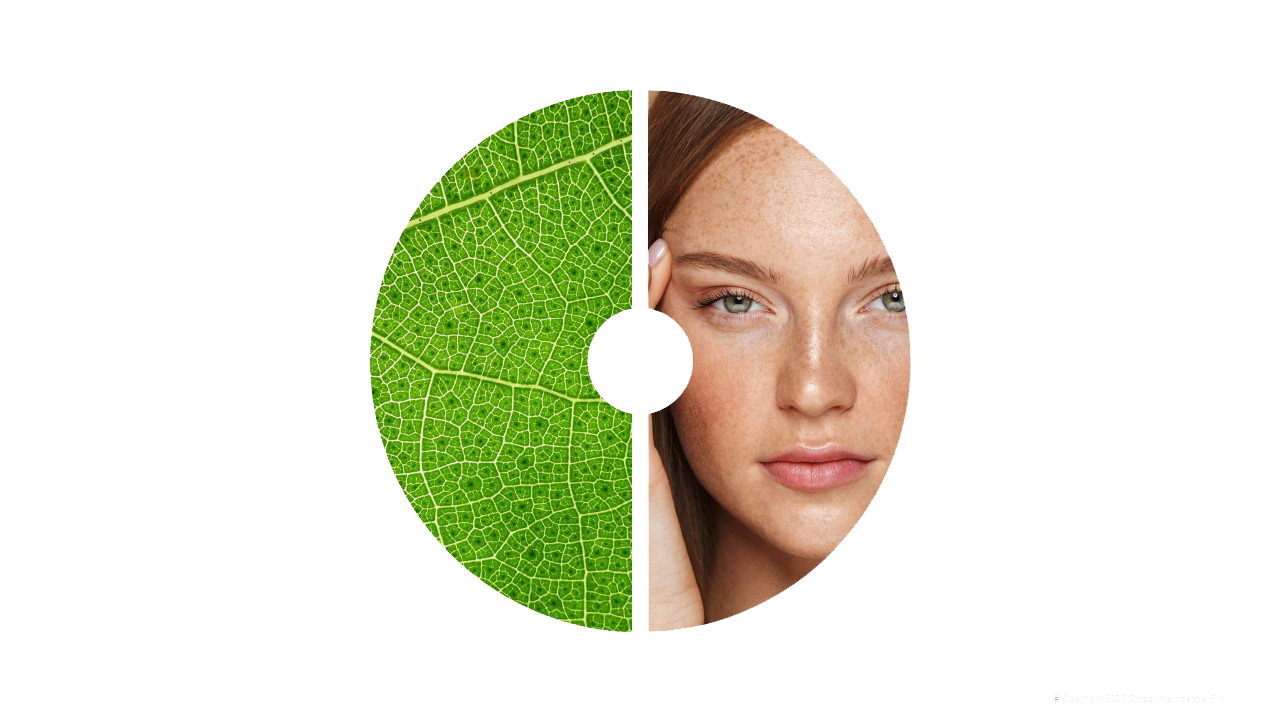For Croda’s 100-year milestone, we’ve gathered thoughts from our heads of R&D and Strategy on which key trends across the chemical ingredient supplier industry are poised to influence the next 25 years of beauty ingredients.
We’ve collected our findings in the report “Navigating the future of innovative ingredients: Trends shaping the next 25 years” and provided some highlights below.

Sustainability
The 2024 World Economic Forum Global Risk Report lists its top four risks to the chemical ingredient supplier industry as:
- Natural resource shortages.
- Biodiversity loss.
- Critical changes to earth systems.
- Extreme weather events due to climate change.
The next 25 years of Consumer Care
View more
All four of these risks relate to environmental stress and indicate the importance of environmental sustainability in our industry.
Key sustainability considerations in the beauty industry include:
Impact on resources
Unsustainable extraction practices for raw materials will lead to resource shortages, habitat loss, and decreases in biodiversity. It is therefore imperative that businesses transition to become Nature Positive, meaning that they are actively preserving and restoring species, ecosystems, and natural processes. Sources: What is Nature Positive? or Nature Positive | Croda
The shift from virgin petrochemical feedstocks to bio-based, recycled and waste materials will also gain momentum, with the proportion of virgin petrochemicals used in the cosmetics ingredients industry expected to decline significantly over the next 25 years. However, as populations grow and the competition for biomass between food and these ingredients intensifies, bio-based materials that are perceived to be competing with food for arable land will come under increased scrutiny. Carbon is the building block upon which our industry is built, and the challenge will be to find truly sustainable carbon sources as alternatives to both virgin petrochemicals and prime crop-based biomass. Various new carbon sources are being explored across the industry such as waste gas capture technologies as well as plant derived lignin as raw materials.
Owning net-zero

The 2030 decarbonisation net-zero targets to which governments around the world subscribed in the late 2010s and early 2020s are predicted to be missed by most. As a result, national governments are expected to pass the pressure down to corporations who will be required to step up and provide solutions. This is likely to come in the form of industry targets and regulation – such as those already in place in the automotive sector for electric and hybrid vehicles – and through extra taxation on products that undermine a country’s ability to meet national environmental commitments – such as the levy on plastic bags in UK shops.
We can expect that by 2050 these measures will have moved from packaging for consumer products to the raw materials from which they are made. Legislation and regulation in this area could become far more complex and give speciality ingredients companies more work to do to ensure compliance and remain competitive. Yet it also offers a significant opportunity for those companies with sustainability already at the centre of their strategy. Businesses that are seeking sustainable ways to increase the purity, performance, and provenance of their products, and those with the expertise to evidence their environmental impact from cradle to grave, are likely to navigate the instability most effectively.
This is why our industry is looking closely at adopting Life Cycle Assessment (LCA) as a standard decision-making tool. This is a significant change – unlike current measures for sustainability claims, LCA can look at the environmental impact of a product from ‘cradle to grave’ and involves a far more thorough analytical review from development to sourcing and disposal. It means claims of sustainability will move beyond only reducing greenhouse gas emissions, to a more rounded assessment of the value chain, where questions about carbon sources, biodegradability, and product end-of-life will be front of mind.
Croda Beauty has carried out an array of both cradle-to-gate and cradle-to-grave LCAs, evaluating 16 key indicators including climate change, land use, water use, human toxicity, and eutrophication. This comprehensive approach gives brands the insights they need to understand any potential burden shifts, enabling them to best meet business needs.Consumer choice
We already see that a significant proportion of consumers want to buy more sustainable products from companies that are behaving responsibly and are providing solutions to climate change. Furthermore, consumers are already choosing products that meet the effects of climate change, such as skin care that combats the effects of air pollution.
We discuss this extensively elsewhere, particularly in our Climate Adaptive Beauty trend page.
Find out more about our sustainability commitments and achievements.
Biotechnology
Biotechnology is already disrupting traditional ingredient manufacturing processes. That is expected to continue over the next 25 years as we see increasing emphasis on biotech solutions across 3 main categories: plant cell cultures, fermentation and marine biotechnology.
Croda Beauty is well placed to meet this trend, as we have more than 30 years of experience in the field and almost one-third of our cosmetic active ingredients are derived from biotechnology.
Plant cell culture

Croda Beauty is proud of our world- leading position in plant cell culture, in part because we know how crucial they will be to the next 25 years of the beauty industry. Plant cell culture offers the ability to protect biodiversity and natural ecosystems through limiting the quantity of raw plant material required, ultimately reducing the need for traditional cultivation methods and arable land use.
Plant cell culture also boosts innovation by enabling the production of specific compounds at very high levels of purity for advanced applications.
Examples of Croda Beauty ingredients manufactured using plant cell culture include Mel[o]stem and Majestem.
Fermentation
Fermentation represents a way to produce speciality ingredients using renewable, biologically-derived resources and thereby reducing resource consumption. As a potential alternative to petrochemicals and fossil fuels, fermentation can support the transition towards a circular economy by using renewable, biological feedstocks and even waste materials.
Examples of Croda Beauty ingredients manufactured using fermentation include NatraFusion™ SL HA and KeraBio™ K31 which both use targeted microorganisms to generate stocks of active ingredients that conventionally would be obtained from petrochemical or animal sources respectively.
Marine biotechnology

With more than 80% of marine organisms still unexplored, the opportunity to discover novel compounds that could revolutionise product development across multiple industries is vast. Marine micro-organisms, such as those living in extreme environments, like volcanic vents, could offer unique and efficacious compounds for future product innovation. One example is Luceane™, obtained by biofermentation of Pseudoalteromonas strain.
Diversity
Economic growth in the developing world is outstripping established markets with Asia, the Middle East and Africa representing particularly significant sources of future growth, driven by an expanding middle class and urbanisation. This is leading to increased penetration of consumer care products across all cultures of the world, requiring ingredient suppliers to consider cultural and ethnic differences for their product portfolios.
An ageing population is also driving consumption, with the number of people over the age of 60 set to reach 22% by 2050 according to the World Health Organization, up from just 12% in 2015. Older people in developed markets tend to have more disposable income and fewer responsibilities so they are more likely to make luxury or impulse purchases. And because people are living longer, as they get older, they will also prefer products that make them feel healthier or look younger. Beauty is becoming synonymous with wellbeing, confidence and self-esteem at every stage in life, providing an opportunity to deliver improved outcomes for older people who are becoming a higher proportion of the global population.
Digital/Human augmentation
Within the next 25 years we are expected to witness a profound evolution in human augmentation through technology, driven by advancements in biotechnology, artificial intelligence (A.I.), robotics, and nanotechnology.
By 2050 we expect the most important impact of this augmentation on the consumer care industry will be the growth of biometric data and its ability to enable ‘ultra-personalisation’. Consumer care companies will be able to leverage biometric data to develop skin care products tailored to an individual’s real-time skin pH, hydration levels, or UV exposure, or hair care products formulated according to scalp and hair health analysis data gathered from biosensors.
A.I. will assist in this space, helping to accelerate the discovery of new materials and improve production efficiency. Manufacturing will need to become more agile, with rapid prototyping and testing to create bespoke products. Consequently, ingredient suppliers will need to rethink their portfolios, creating ever more innovative products that seamlessly integrate with technological enhancements.


